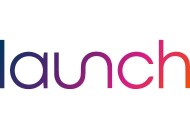
The answer lay within the six characteristics of exponential leadership (from Salim Ismail’s Exponential Organizations):
- Visionary Customer Advocacy
- Data-Driven Experimentalism
- Optimistic Realism
- Extreme Adaptability
- Radical Openness
- Hyper-Confidence
In this article, we’ll take a deeper dive into the first characteristic, which leaders at any level can embody for their organizations.
Visionary Customer Advocacy - “If customers see their needs and desires being attended to at the highest levels, they are much more willing to persevere through the chaos and experimentation that often happens with exponential growth.”
Many leaders see their job as advocating for their organization. They feel a heavy burden to ensure profits are strong, partnerships are thriving, and their employees are satisfied. None of this is a problem, obviously—but exponential leaders also focus on the absolutely vital element that makes the rest of those outcomes possible: advocating for their customers.
Visionary customer advocates continually listen to customers to understand and empathize with their needs. So how do you achieve that? Let’s take a stroll.
1. Define WHO you serve.
The first step to customer advocacy is customer knowledge. Who does your constituency consist of? Who needs your services? What challenges might your constituents face when seeking your services?
When considering these questions, it’s helpful to identify your customer profiles, or personas, to organize your key demographics and further segment them into profiles with unique needs. “These personas oblige agencies to take the customer perspective in designing and delivering services—stimulating new and creative insights beyond the standard rules and procedures within which government employees are used to operating,” states this McKinsey report. By grouping and categorizing your customers through critical thinking and research, you get one huge step closer to providing an accessible and efficient experience for every constituent under your mission.
Providing an accessible experience means ensuring everyone has equal opportunity to interact with public services, physically and digitally. Accessibility is increasingly in the spotlight with new governmental regulations for websites, employee portals, service information, and communications. With new requirements imminent, every public entity must comply with accessibility guidelines, and every public leader and partner must become an accessibility advocate. To better equip ourselves, we partner with digital accessibility solutions experts to assess, achieve, and maintain digital accessibility standards so that our government clients create and deliver a better user experience for all online visitors.
2. Understand WHAT they’re looking for.
Next, it’s important to understand your customers’ GOALS from the perspective of each persona. So, piggybacking off the questions you asked as you determined who your customers are, dive into these: Why would each persona need your services? How would they try to access them, and why are they doing it that way? Ultimately, when they contact you, what are they looking to do? Most importantly, how can you help them reach their goal in the most efficient, effective way, for both your team and your constituent?
One of your missions is to be a good steward of public funds. Luckily, the best ways to optimize resources are the same desires your customers have for your services: More online access and automation, less time spent solving each customer’s problem, more intuitive and/or informative self-service, and less customer service congestion. That means more efficient use of your team and budget while creating faster, cleverer solutions for your constituents.
And that means digging into the highlights as well as the lowlights. Brainstorm ways your service can shine, as well as potential pain points with your team. Do you have disconnects or friction points between your services and your customers? If that happens in your org, what causes it? Even if you can’t change certain processes, how can you ease the journey? For the answer to this, we turn to step three of visionary customer advocacy.
3. Determine HOW you’re going to best serve them.
Now that you know what your customers want to achieve, how will you provide a good EXPERIENCE? A useful tool to accomplish this is Customer Journey Mapping, where you and your team can chart the existing experience in your org and its “defining moments.” Defining moments might include the first time a constituent hears about a program you offer, the moment they try to acquire it (whether that’s opening an online application or walking through your office doors), or what happens when they reach out to customer service.
Determining these pivotal moments in a customer’s experience with your organization gives you the chance to pinpoint and eliminate potential friction points, as well as seize opportunities to impress and delight. For example, TSA identified low-risk travelers to invite to the expanded PreCheck program, providing a better experience for “known travelers” while shortening overall screening times.
USA.gov used a journey-centric approach to find 110 ideas for improving the customer experience (or CX), then prioritize where to focus their efforts. In their case study, they found that “the journey mapping process and results helped us clearly see the pain points and gaps in the customer’s experience, including channel, content, and device gaps. It also helped to build empathy and increase understanding with our employees.”
This process, from persona creation to journey mapping, is exceptional because in addition to helping organize the mission and processes of a public entity, it also highlights both functional and emotional needs, including fears and frustrations, attitudes, and satisfaction drivers. Knowing these enables your organization to empathize with the people who work there and the people who need to work with you, and empowers front-line employees to deliver human-centered experiences. You can find a wealth of resources for government agencies in this Customer Experience Toolkit from digital.gov, and become the visionary customer advocate your agency—and your community—needs.
Tune in next time as we analyze how you can incorporate Data-Driven Experimentalism into your team on the quest to leading the way in exponential government.








